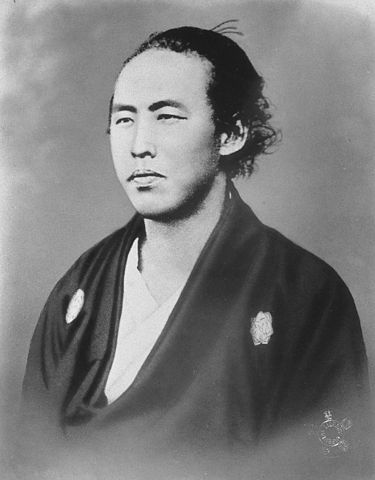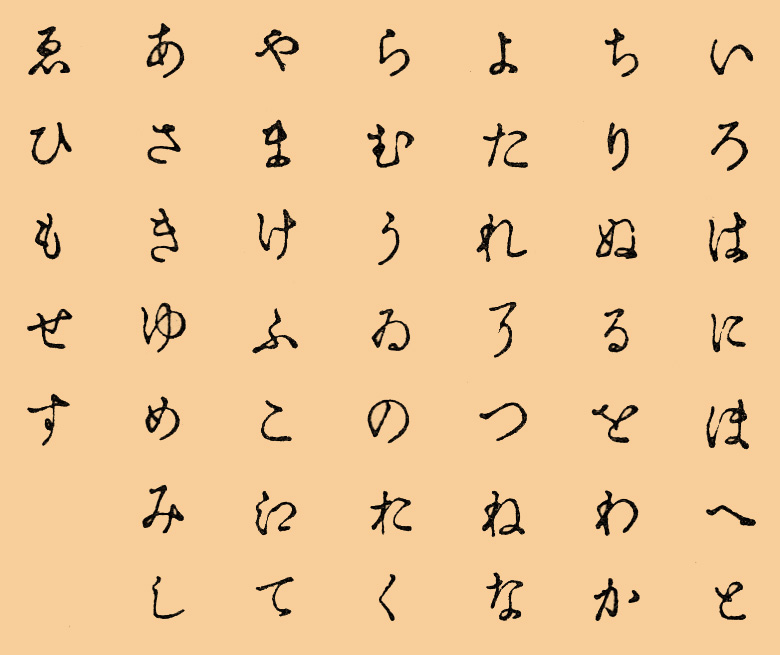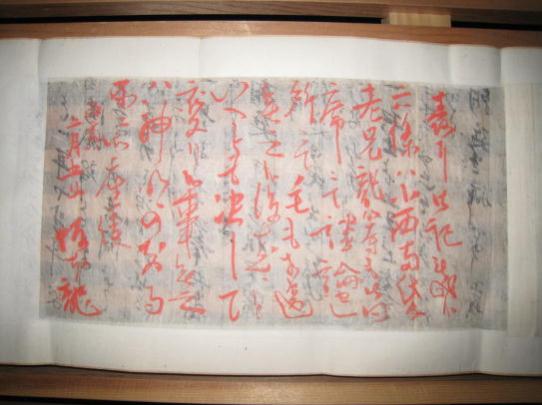Ryoma Sakamoto, known as a key figure who changed Japanese history during the turbulent Bakumatsu period, is renowned not only for his swordsmanship and political acumen but also for his role as an information strategist. This article delves into Sakamoto’s use of encrypted communications, exploring a lesser-known aspect of how he navigated the tumultuous times of the late Tokugawa shogunate.

Portrait of Ryoma Sakamoto. Known as a prominent figure of the Bakumatsu period, he was also a master of encrypted communication.
- Historical Context
- Sakamoto Ryoma and the Need for Encrypted Communication
- Ryoma Sakamoto’s Encryption Methods
- Establishing an Encrypted Communication Network
- The Satsuma-Choshu Alliance and Encrypted Communication
- Achievements and Limitations of Encrypted Communication
- Ryoma’s Assassination and the Future of His Information Strategy
- Comparison with Modern Times
- Conclusion
Historical Context
To fully grasp the significance of Ryoma Sakamoto’s encrypted communications, it’s crucial to understand the historical context of Japan during the Bakumatsu period (1853-1867). This era marked the end of the Tokugawa shogunate’s rule and was characterized by intense political turmoil and rapid societal changes.
Key elements of this period include:
- Feudal domains: Japan was divided into semi-autonomous domains, with Satsuma (in modern-day Kagoshima) and Choshu (in modern-day Yamaguchi) being two of the most powerful. These domains would play crucial roles in the eventual overthrow of the shogunate.
- Political tension: The arrival of Commodore Perry’s “Black Ships” in 1853 forced Japan to end its policy of isolation, leading to internal conflicts between pro-imperial and pro-shogunate factions.
- Modernization efforts: Many domains, including Satsuma and Choshu, began secretly modernizing their militaries and seeking foreign knowledge, often in defiance of shogunate policies.
Ryoma Sakamoto operated within this complex political landscape, working to unite various factions against the shogunate and push for Japan’s modernization. His use of encrypted communications was essential in navigating these dangerous political waters and coordinating actions between formerly hostile domains.
Sakamoto Ryoma and the Need for Encrypted Communication
Information Control in the Bakumatsu Era
Following the arrival of Commodore Perry’s Black Ships in 1853, Japan entered a period of significant transition. As the shogunate’s authority waned, various domains began exploring independent diplomatic and military strategies. In response, the shogunate tightened its control over information, closely monitoring communication between domains and contact with foreign entities.
Ryoma’s Position
Ryoma Sakamoto, a ronin from Tosa domain, operated beyond domain boundaries and was constantly under surveillance by the shogunate and other domains. His activities, sometimes associated with the dangerous concept of “overthrowing the shogunate,” carried high risks of information leakage through conventional communication methods.
Adoption of Encrypted Communication
Given this background, Ryoma keenly felt the need for encrypted communication to conduct his activities in secret. He viewed it not just as a tool for information concealment, but as a means for swift and accurate information transmission.
Ryoma Sakamoto’s Encryption Methods
Basic Encryption Techniques
While research into Sakamoto’s encryption methods is ongoing and their full extent remains unclear, historians and cryptography experts suggest the following characteristics:
- Steganography: The technique of hiding secret messages within seemingly unrelated text or commercial documents. (Note: Steganography is the practice of concealing the very existence of a message.)
- Substitution cipher: A method of replacing specific words or expressions with others carrying different meanings. (Note: A substitution cipher is a method of encrypting by which units of plaintext are replaced with the ciphertext.)
- Context-dependent interpretation: A method of changing interpretation based on context or situation. (Note: This technique allows the same encrypted message to have different meanings depending on the context.)
Use of the “Iroha” Poem
It is believed that Ryoma also used a unique encryption method based on the traditional Japanese “Iroha” poem, which contains all syllables of the Japanese language exactly once.

The ‘Iroha’ poem, which Ryoma allegedly used as a basis for his encryption. Containing all sounds of the Japanese language, this poem was well-suited for creating ciphers.
The encryption method using the “Iroha” poem is thought to have employed techniques such as:
- Assigning numbers to each character in the “Iroha” poem and using these numbers to substitute characters.
- Rearranging the order of characters based on the sequence of the “Iroha” poem.
- Using specific characters from the “Iroha” poem as keywords with important meanings in the encrypted text.
Disguise as Commercial Documents
Ryoma disguised many of his encrypted messages as commercial documents, using the activities of his Kameyama Company (later known as Kaientai) as a cover. Important political messages were hidden within seemingly ordinary business correspondence.

The flag of Kameyama Company (later known as Kaientai) founded by Ryoma. The activities of this organization were used as a cover for many encrypted communications.Yanajin, Public domain, via Wikimedia Commons
For example, a part of a letter supposedly sent by Ryoma to the Choshu domain in 1866 contained the following passage:
“Fifty rolls of Oshima cotton fabric from Choshu, purchased at 700 silver momme per roll.”
While this appears to be a simple business report, it actually meant: “Choshu domain can mobilize 5,000 troops, with an allowance of 700 silver momme per person.” (Note: Oshima cotton was a specialty product of Choshu, and momme was a unit of weight used for silver currency.)
Frequent Changes of Encryption Keys
To enhance security, it is believed that Ryoma frequently changed his encryption keys (the correspondence between words and their meanings). This minimized the risk of information leakage even if one encrypted message was deciphered.
Establishing an Encrypted Communication Network
Trusted Comrades
Ryoma’s encrypted communication network was supported by trusted comrades. In particular, allies like Shintaro Nakaoka and Munemitsu Mutsu played crucial roles in creating and decoding encrypted messages.
Setting Up Information Relay Points
Ryoma established information relay points in major cities such as Nagasaki, Kyoto, Osaka, and Edo. These relay points were often managed by merchants or innkeepers sympathetic to Ryoma’s cause, who outwardly conducted normal business while secretly exchanging important information.
Utilization of Overseas Networks
Through his activities in Nagasaki, Ryoma also built connections with foreign merchants. He obtained the latest overseas information through these foreigners, encrypted it, and transmitted it to his comrades within Japan.
For instance, information about the latest British rifles obtained through Glover & Co. in 1866 was reportedly conveyed in the following encrypted message:
“English tea leaves, 20 silver ryo per kin, of supreme quality.”
This message is believed to have actually meant: “English rifles, 20 silver ryo each, of extremely high performance.” (Note: Ryo was the main unit of currency in Edo period Japan, and kin was a unit of weight.)
These examples demonstrate how Ryoma and his associates cleverly used seemingly innocuous business language to transmit sensitive political and military information, effectively evading the shogunate’s strict surveillance.
The Satsuma-Choshu Alliance and Encrypted Communication

The Satsuma-Choshu Alliance, realized through Ryoma Sakamoto’s efforts and the use of encrypted communications. This “Satsuma-Choshu Alliance Document” is a valuable historical record that tells the story of this historic achievement.National Personnel Authority website, CC BY 4.0, via Wikimedia Commons
Role in Alliance Formation
Ryoma’s encrypted communication played a crucial role in the formation of the Satsuma-Choshu Alliance in 1866. It was necessary to safely transmit highly confidential negotiation details to connect these two major domains, which had previously been hostile to each other.
Specific Examples of Use
An example of an encrypted message related to the Satsuma-Choshu Alliance is said to be:
“Business conditions are unfavorable. Request to halt shipments due to soaring rice prices.”
This seemingly simple commercial message is believed to have actually contained the hidden message: “The meeting between Satsuma and Choshu will proceed tomorrow.”
Prevention of Information Leakage
Through Ryoma’s encrypted communication, Satsuma and Choshu were able to proceed with specific discussions towards an alliance while deceiving the shogunate. For example, during the conclusion of the Satsuma-Choshu Alliance in August 1866, Ryoma is said to have used the following encrypted message to inform representatives of both domains about the meeting date and location:
“Please attend the business meeting on the coming Day of the Ox at Nijo Aburanokoji in Kyoto without fail.”
This message is believed to have actually meant: “Please attend the meeting at Nijo Aburanokoji in Kyoto on August 21 without fail.”
Achievements and Limitations of Encrypted Communication
Successful Cases
Ryoma’s encrypted communication is believed to have been particularly effective in the following scenarios:
- Secret formation of the Satsuma-Choshu Alliance
- Behind-the-scenes negotiations towards the return of political power to the Emperor
- Exchange of information regarding weapons procurement from overseas
Limitations and Challenges
On the other hand, the following limitations and challenges are thought to have existed:
- Decryption took time, sometimes causing delays in responding to urgent situations.
- Managing and updating encryption keys was labor-intensive.
- Securing reliable information relay points was an ongoing challenge.
Ryoma’s Assassination and the Future of His Information Strategy
The Last Encrypted Message
On November 15, 1867, Ryoma Sakamoto was assassinated at the Omiya inn in Kyoto. An encrypted message believed to have been sent just before his death exists, but its contents remain controversial and have not been fully deciphered to this day.
Influence on Later Generations
Ryoma’s information strategy is believed to have been carried on by his comrades after his death, contributing to the success of the Meiji Restoration. There are also theories that his encrypted communication methods influenced the early diplomatic communications of the Meiji government.
Comparison with Modern Times
Ryoma Sakamoto’s encrypted communication holds interesting aspects even from the perspective of modern information security. For example:
- Context-based encryption: Ryoma’s method of changing interpretation based on context can be seen as a prototype of advanced encryption technologies used today.
- Use of steganography: Ryoma’s technique of hiding secret messages within seemingly harmless documents can be considered a precursor to modern digital steganography.
- Multi-layered security: Ryoma’s information strategy implemented multi-layered security measures, including encryption, information distribution, and the use of trusted intermediaries.
Conclusion
Ryoma Sakamoto’s encrypted communication served as a crucial foundation for his activities during the Bakumatsu period, an era of strict information control. It was not merely a tool for information concealment but played a role as an “unsung hero” supporting the tide of change towards Japan’s modernization.
Ryoma’s aspect as an information strategist is a manifestation of his multifaceted talents and provides an essential perspective for a more comprehensive understanding of his role as a key figure of the Bakumatsu period. Even in considering the importance of information security in today’s digital society, Ryoma’s efforts from over 150 years ago offer many insights.
The trajectory and achievements of Sakamoto Ryoma’s activities ~ Leading the Tosa clan to become a powerful domain in the late Edo period
“Dealing a blow to the shogunate while making a fortune for themselves” The surprising strategy that Sakamoto Ryoma was about to implement
Sakamoto Ryōma
Sakamoto Ryōma: The Samurai Who Dreamed of a Modern Japan
Sakamoto Ryōma


